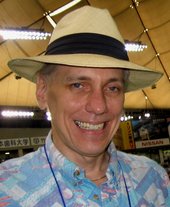
Late bloomer: Giants' Sawamura spearheads big rookie crop

Late bloomer: Giants' Sawamura spearheads big rookie crop
by Jim Allen (Apr 9, 2011)
Since last autumn's amateur draft, this season has been hyped as the year of rookie pitchers.
Of three big university pitchers who drew the most attention on draft day, none has been more impressive this spring than Yomiuri Giants right-hander Hirokazu Sawamura.
"I've never experienced Opening Day [as a pro], but I'm getting excited. I'm doing all I can to earn a spot in the rotation and keep it," he told The Daily Yomiuri in March.
After seven strikeouts in five scoreless innings in an April 2 charity game in Nagoya, Sawamura's spring ERA stood at 0.00 over 16 innings.
"I just went after hitters," he said. "I want to pitch well, so that people will be able to say, 'They [the survivors of the disaster] gave him courage.'"
Four years ago as a high school senior, Sawamura barely registered on pro scouts radar. At the time, teams were utterly focused on marquee Koshien duelists Masahiro Tanaka and Yuki Saito.
Saito opted to attend Waseda University instead of playing pro ball, and Tanaka turned pro to rave reviews. Both stories were national news, while the unheralded Sawamura quietly moved on to Chuo University.
Last autumn, Sawamura and Tatsuya Oishi, whose decision to play college ball also went unnoticed, were rated by major league scouts as the top two players in Japan's draft.
Saito, who signed with the Hokkaido Nippon Ham Fighters, has lost none of the popularity he first gained in high school and was far and away this spring's fan favorite. But both he and Oishi have struggled this spring. Saito has alternated good starts with bad, while Oishi, a hard-throwing Waseda reliever, has not looked solid as a starter for the Saitama Seibu Lions.
Sawamura, however, has been as good as advertised.
On March 2, he made his spring debut against the Lions in front of a weeknight crowd of over 30,000 at Tokyo Dome. The right-hander allowed one scratch single in four innings.
"To the extent that so many fans came, I really wanted to pitch well and shut our opponents down," Sawamura said.
"As for the results, I'll give myself 80 points out of 100, but I often had the wrong kind of spin [on my fastball] and my location with fastballs and breaking balls was not sharp."
The speed at which Sawamura has raised his game to the pro level could make one think he has been throwing caution to the wind in practice. Although conscious of his new environment, the 23-year-old said he has been taking things at his own pace.
"I've heard talk that my effort has been extreme, but it's not that much different from my norm," he said. "I am doing a little more than usual, but camp started on Feb. 1 so I started earlier, too. I don't feel like I've been rushing [under pressure] or anything like that.
"When I've needed to step back, I've stepped back. I've been disciplined in not overdoing it."
The transition to the pros is often a difficult one often because the nature of the season is different.
"In university, you only play in the spring and fall, whereas in the pros you have a long season that will require you to throw every five or six days," he said. "I haven't experienced this and so I am a little apprehensive, but until I actually go through it, I won't know what it's like.
"I have confidence, however. I just want to stay confident game after game.
"In the pros, the routine is more set, it's the same thing over and over. In university, I would pitch every Tuesday. If we won that game but lost Wednesday, then I would pitch on Thursday [in the tiebreaker], too."
Preparation and staying fit through the long season, though, is just one part of the battle. Pro hitters are a big step above what Sawamura was used to facing in the Tokyo Metropolitan League.
"They [pro batters] have self confidence, you can see that in the way they take their stances," Sawamura said. "That's the pro style. You can feel it. What you have to do is be the same way and go after them.
"You have to attack them."
The Ibaraki native's route to the pros began in elementary school, but not on the mound.
"Since I was a kid, I've just loved playing ball. The possibility that some day I might be able to make a living doing something I love really appealed to me. But now that I am a pro, it is a job. But playing a sport, playing baseball, is a fun job.
"Before [I became a pitcher], I was a catcher and an outfielder, center fielder.
"But pitchers were so cool. The players I looked up to were [Daisuke] Matsuzaka and [Koji] Uehara."
Sawamura has been less than happy with his command in practice, but said he is not losing sleep over it.
"My command hasn't been great, and even as we get close to Opening Day, my pitches are not quite moving the way I want [in practice]," he said.
"However, throwing to a batter is much easier for me [than throwing in the bullpen]. When a batter steps in and the crowd is there, the motivation is different. The adrenaline level goes through the roof.
"You practice for the sake of the game, but there is a massive difference between the two. The game is the game. You practice so that when you're in the game and the motivation is high, you can pitch well."
To access the original work (if still available), please reference:
http://www.yomiuri.co.jp/dy/sports/T110408004015.htm.
Back to the works of Jim Allen
This work is licensed under a Creative Commons License.
Some rights reserved.
